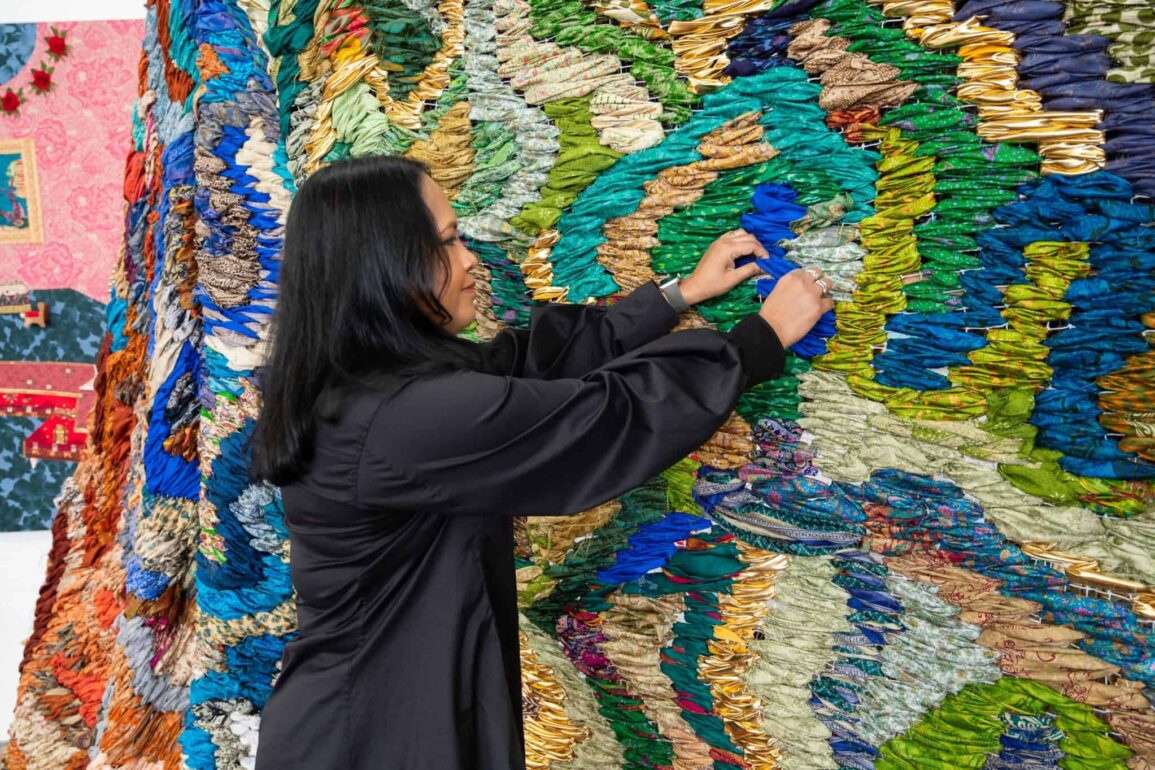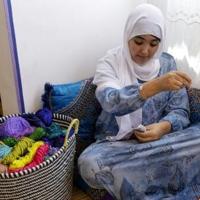The first time I walked into a gallery showcasing South Asian art, I was 17. It was a small gallery that had opened up in Queens, and as a naive high schooler, I remember noticing the tapestries, sculptures and artwork depicting themes and designs that were similar to the ones in my own household. I immediately felt an immense sense of pride.
In reality though, there is a vibrant and underrepresented group of artists that exists within the South Asian diaspora, and that’s the Indo-Caribbean community. Though not as well-known, there are many artists, especially female, who are making significant strides in the art world. So, where are these women and communities when it comes to representation?
Indira A. Abiskaroon, curatorial assistant at the Brooklyn Museum, offered some insight into this often-overlooked community of artists. Most importantly, Abiskaroon noted how the Indo-Guyanese artists often speak to themes of migration, colonization, and cultural identity in their work.
“I grew up in this community,” Abiskaroon reflects. “There’s a shared sense of ancestry where our grandparents and great grandparents came from South Asia to the Caribbean through the British indentured system, but their work often explores the complexities of diaspora, blending influences from their Indian heritage, Caribbean upbringing, and experiences in Western countries.”

Suchitra Mattai with artwork for the exhibition “We are nomads, we are dreamers.”
Photo by Anna Maria Zunino Noellert, courtesy of Socrates Sculpture Park
Through her work, Abiskaroon has witnessed a small but growing number of artists in whom she sees herself. One artist at the forefront of this movement is Suchitra Mattai. Born in Guyana, but a nomad who has lived across Canada and the States (currently in California), Mattai entered the art world full-time in her 40s; being an artist was not accepted in her family, but Mattai’s graduate work in South Asian history encouraged her to pursue her hobby into a profession.
Mattai’s art spans an impressive range of media, including paintings, tapestries, and sculptures. Her creations draw inspiration from diverse sources such as Indo-Caribbean portraits, Indian miniature paintings, and European landscape art. Mattai’s artistic journey is deeply rooted in her family’s history. Her great-grandparents were brought from Uttar Pradesh, India, to Guyana as indentured laborers under British colonial rule; her own history informs her dialogue with European painting traditions.
“My process is one of ‘brown reclamation,'” Mattai explains. “I rework original images to tell new stories, inserting women’s handiwork into traditional painterly landscapes through embroidery, needlepoint, and beading.”
What sets Mattai’s work apart is not just her remarkable craftsmanship but also her innovative use of materials. She incorporates family heirloom saris, flowers, bindis, and an array of fabrics, textiles, and found objects into her pieces.
“I use items that I grew up with that identify me as both a South Asian and a Caribbean woman. From the Caribbean part of my identity, specifically, I learned how to sew and embroider as a young girl so that is part of my art, as well as shimmer and different elements to portray our festivals like Carnival,” she adds.

“a nomadic garden” and “becoming,” 2024, by Suchitra Mattai.
Photo by Scott Lynch, courtesy of Socrates Sculpture Park
Mattai’s latest exhibition, We are nomads, we are dreamers, has recently debuted at New York City’s Socrates Sculpture Park, offering a profound exploration of identity and migration. This collaborative showcase (available until Aug. 25), features contributions from artists such as the Barkha Dance Company, and employs the Atlantic Ocean as a powerful metaphor for migration—a recurring theme in Indo-Caribbean art. Through this lens, Mattai creates a space for immigrants to reclaim their narratives, reflect on the female form, and confront historical traumas. The park, renowned for its boundary-pushing approach to public art, provides an ideal setting for this exhibition, particularly given its location in Queens—home to the largest Guyanese community outside of Guyana. Mattai’s work serves as a reflection of Guyanese migration, while simultaneously aiming to bridge the gap between the South Asian and Indo-Guyanese diasporas—communities that, despite shared heritage, often remain disconnected in New York City’s diverse cultural landscape. This exhibition not only celebrates artistic innovation but also fosters dialogue and understanding between these distinct yet intertwined communities.
“It would be so wonderful to join hands and minimize the lack of representation in so many arts, not just the visual arts,” Mattai says. Plus, she always invites collaborations with other Guyanese and South Asian artists to continue the storytelling and sharing of voices.
The work of artists like Mattai and curators like Abiskaroon highlight the importance of including Indo-Caribbean voices in discussions of South Asian art, especially after a complicated colonial history.

“a pocket full of posies,” 2024, by Suchitra Mattai.
Photo by Scott Lynch, courtesy of Socrates Sculpture Park
“We are trying to overcome the lack of acknowledgement because not everyone considers us from the Caribbean. We are fighting against centuries of distorted history and trying to have deeper conversations to establish who we are,” Abiskaroon adds.
As the art world continues to evolve and diversify, both Mattai and Abiskaroon show efforts towards dismantling a multi-layered issue to recognize and celebrate the contributions of Indo-Caribbean artists. Some other names to keep an eye out for include Maya Mackrandilal, Renluka Maharaj, and the Jahajee Sisters.
By amplifying these voices and showcasing their work, we can ensure that Indo-Caribbean artists receive the recognition they deserve, paving the way for a more inclusive and representative art world.
Abiskaroon adds, “People have to see you to know who you are.”
This post was originally published on this site be sure to check out more of their content









